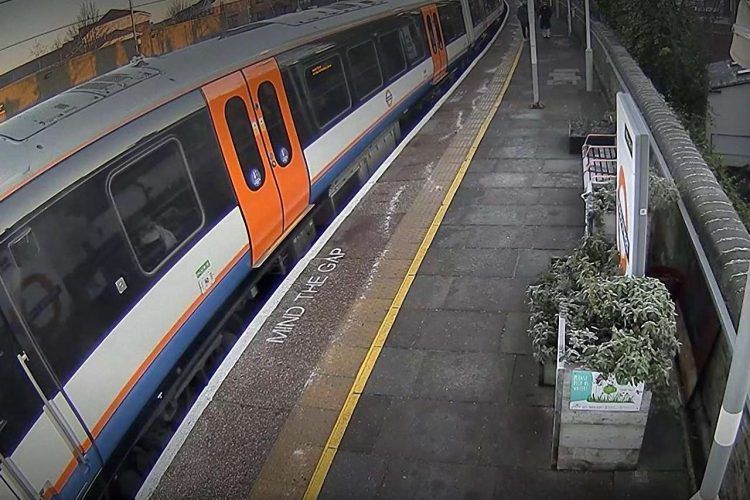The Rail Accident Investigation Branch (RAIB) has issued its report into an incident in which a passenger became trapped in the doors of a train that started to depart, forcing the passenger to run alongside it.
At around 08:22 on 14th January 2022, the passenger became trapped in the doors of the 08.14 Arriva Rail London service (ARL) from Chingford to London Liverpool Street as it was about to leave platform one at Wood Street station.
The train was formed of two class 710 Aventra electric multiple units in which passengers cannot pass between the front and rear units without leaving the train.
Platform CCTV showed the passenger had initially left by the rear door of the fifth car after the train arrived at the station, then attempted to re-board the train using the rear doors of the fourth car, after the door closing sequence had begun. As she attempted to board the train she placed her hand between the closing doors, but after the doors closed, she was left standing next to the train, with her hand trapped between the closed doors.
The train departed from the platform with her hand still trapped in the doors but stopped after it had travelled for around 20 metres and the passenger was able to free her hand from the doors. She didn't sustain any injuries and left the station after speaking to the driver.
The incident occurred because the driver didn't appreciate that the passenger was in an unsafe position when he made the decision that it was safe to start the train. He had seen that the passenger was close to the side of the train before starting the train, but was unaware that she was trapped in the doors and believed she was pressing the ‘door open' button to try and board the train.

Drivers of class 710 trains cannot apply traction power if the door interlock has not been obtained and has received an indication via an indicator light in the cab that the interlock has been achieved. The doors also have an obstacle detection system which is designed to detect the presence of an obstruction when the doors are closing or closed.
Doors will automatically reopen if objects over 30 mm thick are detected, but thinner objects such as fingers or bag straps may not be detected and could still become trapped in closed and locked doors.
The doors and interlock system of the train involved were tested after the incident and were found to comply with the applicable ARL standards.
Drivers are required to carry out a train safety check after they have closed the train's doors to ensure that they are properly closed, nobody is trapped in the doors, and nobody is in contact with the train.
They should also not rely on the interlock to verify that it is safe to start the train. They should also observe the area of platform immediately alongside the train, and re-check that the dispatch corridor is clear, nothing is trapped in the door, the platform edge and gap appear clear, and it is safe for the train to depart.
During this incident, the train driver reported that after the doors closed he checked that he had obtained door interlock. He then looked at his in-cab CCTV monitors and saw that a passenger was close to the side of the train.
The driver believed that this passenger was pressing the ‘door open' button to try and board the train. The driver then started the train. Once he observed on the monitors that the passenger was continuing to move alongside the train, he brought the train to a stand. The driver stated that an emergency egress device was activated on a door on the opposite side of the train to the platform as he did this.
The driver later stated that he did not believe that the passenger could have been trapped in the doors when he started the train, because he had obtained door interlock. This suggests that the driver was, in these circumstances, using the interlock to indicate whether it was safe to start the train.
Very lucky lady. Must of been accidental but she was very lucky.